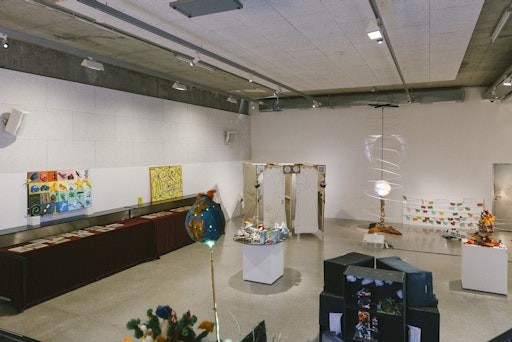In this year’s cycle of the cultural collision project, around 500 students between the ages of 12 and 14 dealt with the topic of mobility in connection with climate change. In the past few months, they have developed creative approaches that combine technology, art and culture. The resulting works of art will be exhibited again in Mumok this time and can be seen from June 24th.
What does it mean to be mobile? What influence does the mobility of the individual have on climate change? And how are social technological development related to human feelings and needs? Questions like these are complex and therefore not easy to answer. In the past few months, around 500 pupils have dealt intensively together with teachers and students from the Vienna University of Technology and with employees of the Mumok and the Technical Museum Vienna Department with questions and problems relating to the topic of the topic and made interesting, exciting and often surprising art objects.
“Art and technology are sisters. Art gives technology a face, makes its consequences visible, critically reflected and emotionally experienced. This dynamic between art and technology, its merger is also reflected in the Cultural Collisions project. Technology placement through art. The exhibition of the great works of art of the pupils in the Mumok shows how young people take up social issues in a creative way, work up with artistic means and Inspire. Jasmin Gründling-Riener, Vice Rector Teaching at the Vienna University of Technology, summarizes her impressions of the exhibition.
Interaction of technology and art
The development and preparation of the topic of mobility and its role in climate change by the participating students again took place in several stages in this year’s cycle. The starting shot was the initial exhibition at the Vienna University of Applied Sciences in autumn 2024. The young people were able to deepen the content conveyed there during the school year in the workshops of the Mumok and the Technical Museum in Vienna.
The impressions of these stages were taken up in class and further treated in technical subjects such as physics and geography. In art lessons, the students then developed an artistic expression in order to present their access to the topic as an exhibit.
“In our mediation work in Mumok, we always try to create bridges on different knowledge disciplines and to work on socially relevant topics. Climate change and the associated mobility will accompany the pupils as a great challenge and I am convinced that it is important to use cultural collisions an active and self -determined participation in the future -oriented questions. Creative thinking and it impresses me with what commitment the young people have devoted to the topic.
At the end of this year’s project cycle, the pupils presented their projects developed as part of Cultural Collision in the exhibition “Gaia’s desperation. Decision of humanity”, which is shown in Mumok from June 24th to July 6th. There is also the possibility to take a guided exhibition tour through the Cultural Collision exhibition:
· Tuesday, 24 and Thursday, June 26, 2025, 5 p.m.
· Saturday, June 28, 2025, 10 a.m.
· Tuesday, 1st and Thursday, July 3, 2025, 5 p.m.
· Saturday, July 5, 2025, 10 a.m.
The Cultural Collision Cycle 2024/25 was supported by funding agencies and sponsors. Many thanks to the Berndorf private foundation, Palfinger AG and the Vienna Foundation.
MUMOK – Museum Modern Art Foundation Ludwig Vienna
Mag. Katharina Murschetz (conductor)
Telephone: +43-1-52500-1400
Mag. Katharina Kober
Telephone: +43-1-52500-1309
OTS original text press release with the exclusive in terms of content of the sender – www.ots.at | Mum
